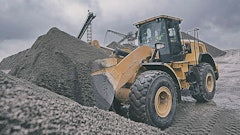
By Lonnie Fritz, Heavy Construction Market Professional, Caterpillar Inc.
Construction technology has the power to transform businesses. Contractors are making huge gains in safety, quality, productivity and efficiency by investing in grading, payload and compaction technologies, telematics, safety systems and more. Maybe because I’ve seen so much success, I often find myself steering the technology conversation toward benefits. But, I know how important the cost issue is, so let me recap what I believe are the key costs to consider as you evaluate a technology investment.
Acquisition costs
Start here—with the purchase price or lease payment for the technology you’re evaluating. For a more complete picture, add in the labor costs associated with evaluating different products, reviewing multiple proposals and making a final selection. And, don’t overlook any costs required to enable an investment. For example, if you need to upgrade an operating system to support new software, that cost should be rolled into your calculation.
Deployment costs
These are costs you accrue as you roll out the technology to users—installation, configuration, training.
Maintenance and support costs
This category captures the cost of keeping new technology running—today’s built-in technology solutions are driving down maintenance costs, adding functionality or scaling up to accommodate more users. Included in the calculation: the cost of warranties, support contracts, licensing agreements, future upgrades and IT support staff.
Risk management costs
As companies grow more dependent on connectivity, new risks emerge relative to internet disruptions, data security breaches and other incidents. The cost of mitigating these risks is one more factor to consider.
Opportunity costs
These costs attempt to quantify the impact of not adopting new technologies. For example, if an investment could allow you to do 15 percent more work with your existing fleet, failure to invest is “costing” you a 15 percent increase in revenue.
Now, can we talk about benefits?
It’s smart to consider all the costs associated with a technology investment, but a full accounting of benefits is also in order. Work with your equipment supplier to quantify the impact on safety, quality, productivity and cost reduction. Consider how an investment could help you:
- Drive down unit cost and increasing profitability
- Increase quality leading to repeat business
- Optimize fleet size
- Allocate resources better
- Finish jobs faster with less fuel and rework
- Eliminate material overruns
- Keep people out of harm’s way
- Attract new employees that are tech savvy
- Identify training opportunities
- Prevent theft and abuse of equipment
- Cut maintenance time and repair costs
- Lower insurance premiums
- Bid more competitively leading to company growth and expansion
- Boost the resale value of your assets
- Simplify compliance reporting
Spend money to make money
Construction technology is an investment. You’ll have to incur some costs to realize the benefits. Just make sure you run the numbers—on both sides of the equation—so you can make the best possible decision for your business and your future.



























